Gardening Book Club
I have written before about wanting to join a gardening book club but realising that I would have to organise one myself. Well, I have gone and done it.
Our first meeting is tonight to decide how often to meet and how to choose what to read. As part of the delight of book club for me is the introduction to books that I wouldn’t have chosen, I am hoping that we will all take a turn in choosing a book and this led me to thinking about books that I would choose. So here is my current list that I will dip into until I see something else!
A French Garden Journey: The road to Le Tholonet by Monty Don
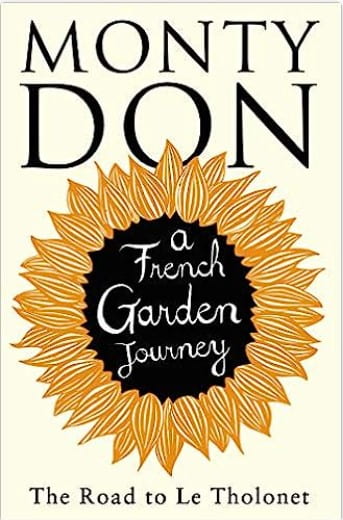
The hero of Gardener’s World and a keen gardener, Don has made programmes about his visits to gardens. I much prefer his writing to the programmes. He has obviously spent quite a bit of time in France outside of work and so his love of the place shines through. The descriptions shine and I enjoyed the parts where he explained how he wrote.
I have a standard routine when writing about a garden that I have visited. Whilst I am there I fire off photographs without any thought as to pictoral quality or lasting value. I am simply making notes alongside the scribbles in my notebook. The pictures are downloaded and the notes transcribed. It is all stored and sometimes hardly looked at for weeks or even months. During this time the memories mature and if, as often happens, I am visiting a dozen gardens in as many days, they meld and merge with just the clear defining characteristics remaining. When it comes to writing, I put up all the pictures on my screen and edit them down. I have two large screens on my desk and the idea is that one has the pictures and the other the words. Memory, research, photographs and notes are all plundered to try and distil the essence of the experience on to the page.
p36
It would make a great writing workshop!
The gardens where you can’t edit the images down because they all are so stunning and reflect the spirit of the place is a garden worth writing about. I bet it doesn’t happen often.
Rhapsody in Green: A writer, an obsession, a laughably small excuse for a vegetable garden by Charlotte Mendelson
Mendelson is a great writer. I have just finished The Exhibitionist by her and she carries this writing over into writing about her garden. As she says in the introduction, this is a book for people who dream of being self-sufficient but have a garden that is 6m2. The writing is romantic and you can just feel the warm summer days, harvesting whilst cooking.
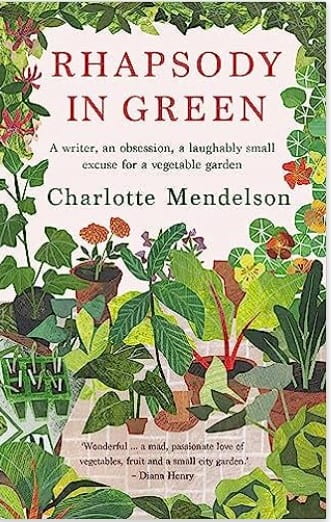
It takes time to understand that the secret to edible gardening on a miniature scale is small, intense tastes. You can buy celery from the corner shop, bake a nameless potato: nobody will care. What will transform your soup or sandwich is two or twelve or a a couple of dozen interesting extras: sorrel, lemon verbena, orange thyme, Greek basil, japanese bunching onions, red oak leaf lettuce and green and pink Mexican tree spinach, cream-streaked mint and the pink buds of society garlic, black cherry tomatoes, bronze fennel fronds, purple hyssop flowers, and sky-blue borage. The joy a white Alexandria strawberry will bring, the satisfaction in a quince you have hand-reared like an orphaned kitten, is immeasurable. You can almost buy anything, except pride.
p68
I can see and taste them now because whilst we might grow for all sorts of reasons, surely the number one reason is taste. We have just harvested Charlotte potatoes with the Vegetable Course delegates and each one has said how delicious they are. You don’t get Tesco potatoes tasting like that, not even potatoes from the big, fancy Farm shop near by.
This is a gardener who is forced to choose the fruit and vegetables that have the most value in terms of taste. There just is not the space to carry those that are a bit meh! No Jerusalem artichokes here.
P.S. I have to admit to not knowing what society garlic is!
Animal, Vegetable, Miracle by Barbara Kingsolver
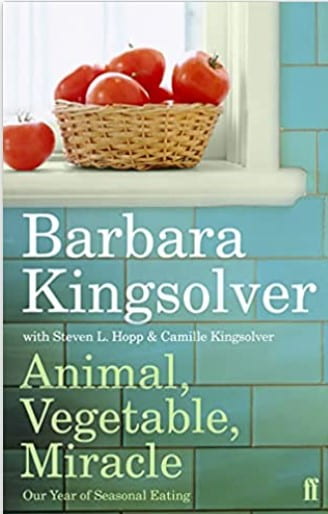
Another prize winning writer. Demon Copperhead, her latest book, has won the Pulitzer prize this year and I suspect will win the Women’s Prize for Fiction on the 14th of June. This book was written in 2008 and details the American food system and the deplorable poverty in fresh food for some people. Coming from the Appalachians, which many people associate with poverty, she and her family write compellingly about eating fresh, seasonally and only what they have grown. It is my dream to do that one year. Only eat what I have grown. I would start the year in June when fresh veg are coming into full swing and continue until June the following year. This is an openly political with a ‘small p’ book about food.
You can’t save whale by eating whales, but paradoxically, you can help save rare, domesticated foods by eating them. They’re kept alive by gardeners who have a taste for them, and farmers who know they’ll be able to sell them. The consumer becomes a link in this conservation chain by seeking out the places where heirloom vegetables are sold, taking them home, whacking them up with knives, and learning to incorporate their exceptional tastes into personal and family expectations. Many foods placed on the Ark of Taste have made dramatic recoveries, thanks to the seed savers and epicurean desperadoes who defy the agents of gene control, tasting the forbidden fruits, and planting more.
p56
Not much further along the page she talks about sesquiterpene lactones – who doesn’t love words like that? (It is the compound that makes lettuce weep a milky sap when picked.)
No Nettles Required: The Truth about wildlife gardening by Ken Thompson
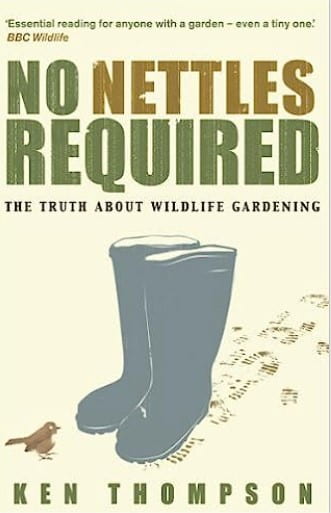
Ken Thompson is a wildlife scientist and writer with this book being published in 2006 but still, science sometimes takes a little while to filter down to the general population. I manage the wildlife plot on the allotment site and several people have wildlife areas on their own plots so this book is of interest to us all.
Ken is a scientist through and through and only wants to do what science says works for wildlife. As he says, the internet is filled with opinions about wildlife gardening but not much solid evidence to back it up. I have found the research that he and others from Sheffield undertook into what works for wildlife in gardens fascinating and have used it to support what I do in the wildlife garden. If I said, just grow stuff and have water, you wouldn’t go far wrong although there is a bit more to it than this.
In the section that is about birds, Thompson states that the more people feed birds, the greater the range of birds present in the garden – unless you have three neighbour’s cats stalking in your garden like I do.
The primary concern of the bird-food and next-box industry, not surprisingly, is to sell you their products. Nor is there anything wrong with this. Install feeders, bird tables and nest boxes in your garden and your local birds will undoubtedly benefit. But you should never forget that even if you buy everything in the catalogue, some of the needs of many birds (and all of the needs of some birds) can only be met by the garden itself.
p139
It’s a start and we have chosen Animal, Vegetable and Miracle by Barbara Kingsolver for our first read.
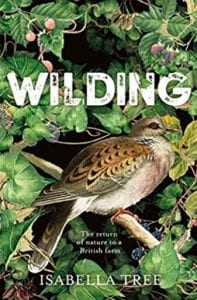 A volunteer who works with me on the wildlife plot suggested I read
A volunteer who works with me on the wildlife plot suggested I read 